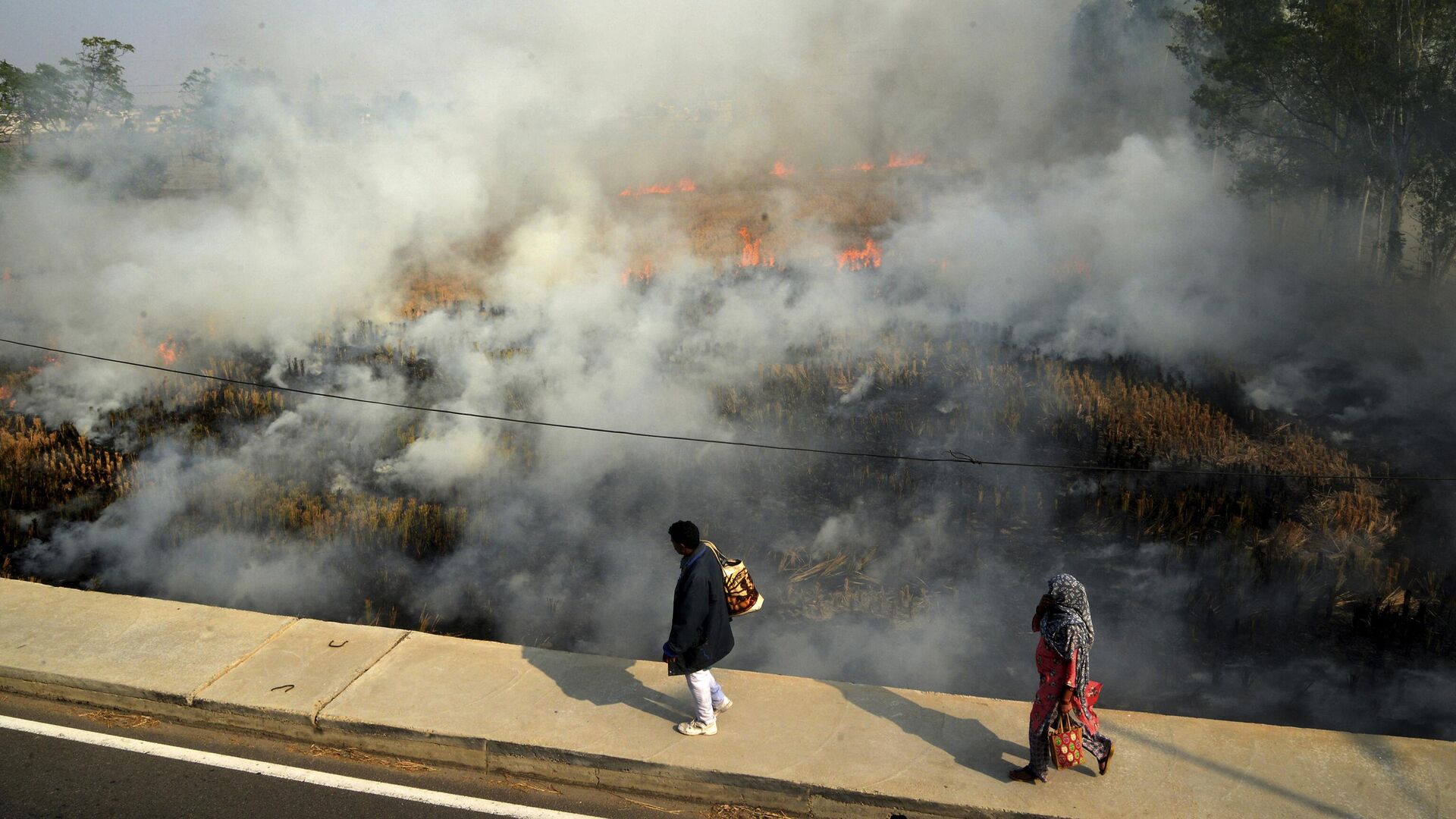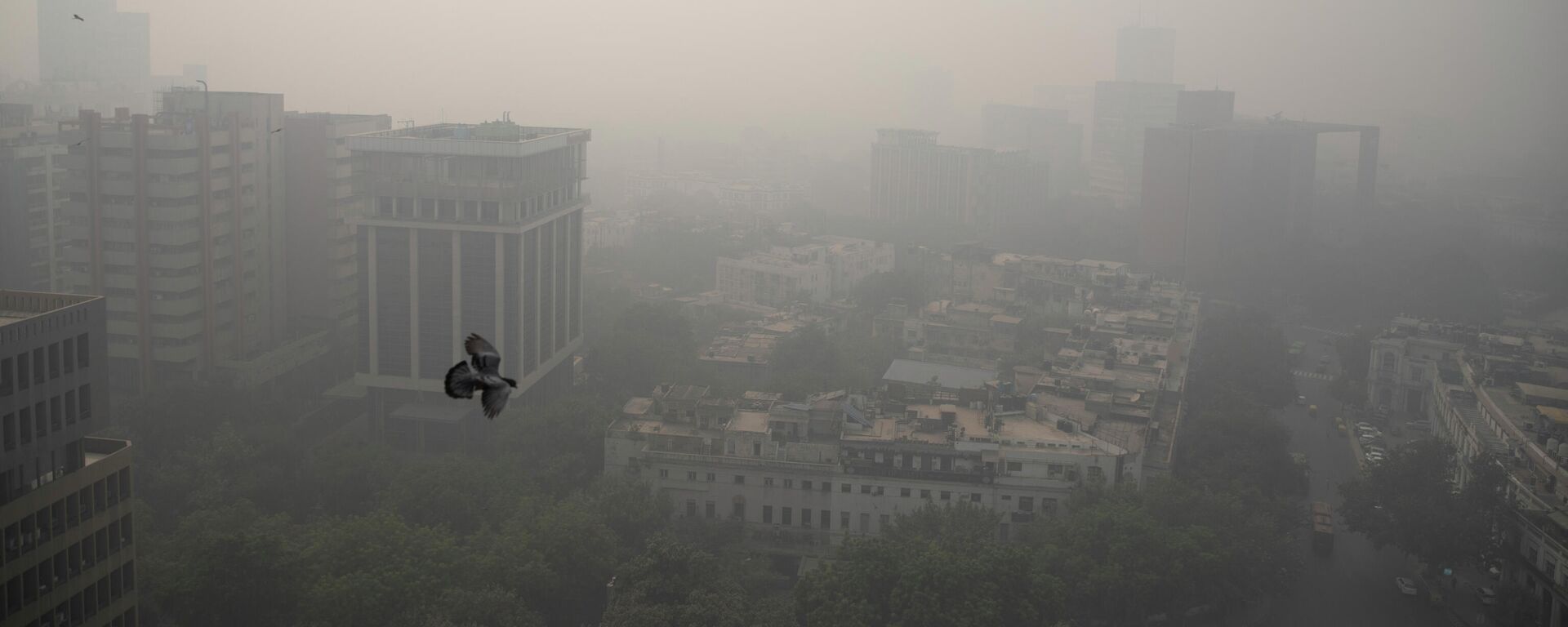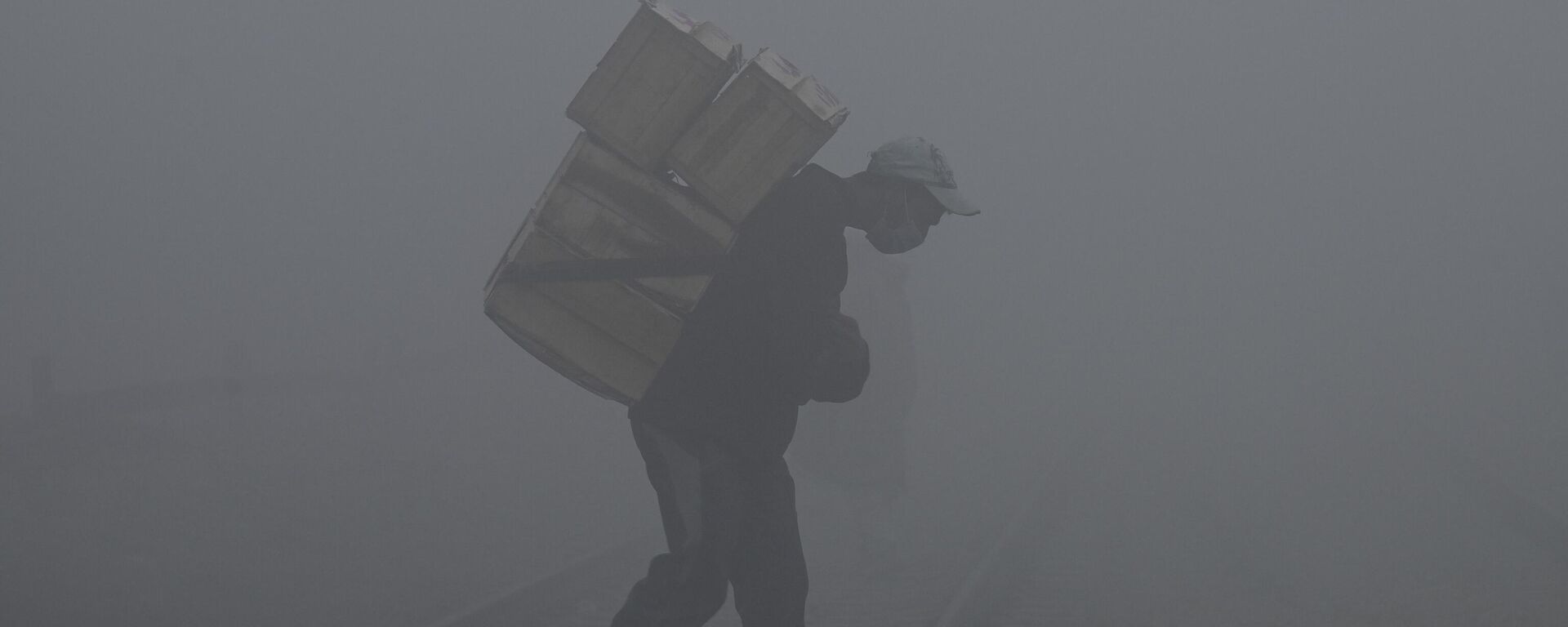https://sputniknews.in/20230328/in-search-of-solutions-for-deteriorating-air-pollution-in-south-asia-1331832.html
In Search of Solutions for Deteriorating Air Pollution in South Asia
In Search of Solutions for Deteriorating Air Pollution in South Asia
Sputnik India
In recent years, South Asian nations — India, Pakistan, and Bangladesh -- have been seen as a hotspot of air pollution. As per a recent report, South Asia is home to 37 of the 40 most polluted cities in the world.
2023-03-28T17:43+0530
2023-03-28T17:43+0530
2023-03-28T17:43+0530
india
nepal
pakistan
air pollution
long reads
environment
https://cdn1.img.sputniknews.in/img/07e7/03/1c/1346045_0:320:3072:2048_1920x0_80_0_0_88151e0b4bc01574be4b6e1d20beb685.jpg
South Asia is home to 37 of the 40 most polluted cities in the world, various estimates suggest.In the region, Bangladesh is considered the world's most polluted country, followed by Pakistan and India. What's more, the Himalayan country of Nepal is likely to join that list.As air particles travel hundreds of kilometers, experts estimate that as much as 30% of the pollution in India comes from Pakistan. Similarly, India is responsible for 30% of the pollution caused in Bangladesh.What is Causing Air Pollution in South Asia?According to Dr. Sachinand Tripathi, a professor at the Department of Civil Engineering, Indian Information Technology (IIT), Kanpur, South Asian countries are "now developing fast and seeing lots of economic activities, including infrastructure projects, industrialization, urbanization, the large amount of emissions from power plants, coal plants at a high speed." Citing a similar reason, Sunil Dahiya, senior analyst at the Center for Research on Energy and Clean Air (CREA), told Sputnik that the primary driver behind high air pollution levels in the region is high fossil fuel consumption for energy needs, i.e. “electricity generation and transportation, as well as other industrial uses.”Does Population Size Matter?A lot of experts cite population density in the region as one of the major causes of pollution. India is the second most populous nation in the world, and is expected to top the list by the end of 2023. Similarly, Bangladesh and Pakistan are considered densely populated nations in terms of area and population ratio.An Intergovernmental Panel on Climate Change (IPCC) report lists population density as one of the causes behind most environmental crises, especially given that common air pollutants include PM2.5, PM10, NO2, and black carbon — all products of human activity.How Crop-Burning Contributes to Air PollutionDespite the complex relations and boundaries between India and Pakistan, environmental challenges seem pretty much the same in both nations.At the onset of winter, farmers start burning their crop residue across thousands of acres of farmland. In November 2020, for example, over 4,000 agricultural fires raged across thousands of kilometers of land between Delhi (India), and Lahore (Pakistan).Speaking about the farming factor, Karthik Ganesan, a fellow and director of research coordination at the Council on Energy, Environment, and Water, a non-profit think tank based in New Delhi, said, “Rice is grown in both parts of the countries. It's a traditional crop, as well as demand for it is rising across the globe, hence both governments (individually) have reduced tax on water and electricity for farmers.”Crop-burning is a bi-annual event — crop residue is burned in April and October. However, it doesn’t contribute much to air pollution in April, as particles are not trapped and travel in the air.The World Bank estimates that Pakistan sees about 22,000 premature adult deaths due to outdoor air pollution. Meanwhile, indoor pollution accounts for 40 million acute respiratory infections and 28,000 deaths annually.According to the World Bank, currently, over 60 percent of South Asians are exposed to an average of 35 µg/m3 of particulate matter (PM) 2.5 annually.According to the World Bank report, some parts of the Indo-Gangetic Plain (IGP) are as high as 100 µg/m3 – nearly 20 times that recommended by the World Health Organization. As per the WHO, annual average concentrations of PM 2.5 should not exceed 5 µg/m3 annually.How Should Air Pollution Be Tackled?South Asian nations are mostly comprised of low-income groups, with development projects being these countries' major focus. But government measures to curb air pollution, so far, have not yielded significant results.“But just having a treaty or regional cooperation is not going to help alone. European countries are more technologically advanced than the South Asian countries. There should be an exchange of knowledge and adapting the technological advancement to deal with the crisis,” Tripathi said.Poor and vulnerable groups are more exposed to poor air levels and, as a result, they suffer the most from the health woes air pollution brings about.Meanwhile, Tripathi said that despite the laws in place, “we lack in monitoring, and strict law enforcement is missing. We do not have adequate capacity to monitor.”Pollution Affects the Poor the MostSputnik also reached out for a comment from an ordinary citizen — an autorickshaw driver in Delhi.To understand how the economy plays an important role, N’Djamena, the capital of Chad - one of the poorest countries in the world, is now seeing deteriorating air quality and a surge in PM 2.5. Observers argue that the primary reason for the surge is massive dust storms from the Sahara Desert.
https://sputniknews.in/20230111/delhi-sees-seasonal-spike-in-respiratory-illnesses-amid-air-pollution-448982.html
https://sputniknews.in/20230313/pakistan-formulates-first-clean-air-policy-to-fight-pollution-1147965.html
india
nepal
pakistan
Sputnik India
feedback.hindi@sputniknews.com
+74956456601
MIA „Rossiya Segodnya“
2023
Deexa Khanduri
https://cdn1.img.sputniknews.in/img/07e6/0c/13/138923_52:0:533:481_100x100_80_0_0_cadf23d341691fc65ff2b22fd1afe584.jpg
Deexa Khanduri
https://cdn1.img.sputniknews.in/img/07e6/0c/13/138923_52:0:533:481_100x100_80_0_0_cadf23d341691fc65ff2b22fd1afe584.jpg
News
en_IN
Sputnik India
feedback.hindi@sputniknews.com
+74956456601
MIA „Rossiya Segodnya“
Sputnik India
feedback.hindi@sputniknews.com
+74956456601
MIA „Rossiya Segodnya“
Deexa Khanduri
https://cdn1.img.sputniknews.in/img/07e6/0c/13/138923_52:0:533:481_100x100_80_0_0_cadf23d341691fc65ff2b22fd1afe584.jpg
pollution in south asian nation, pollution across globe, pollution in india, pollution in nepal, pollution in pakistan, pollution, deadly pollution, why south asian countries are so polluted, pollution in south asian countries
pollution in south asian nation, pollution across globe, pollution in india, pollution in nepal, pollution in pakistan, pollution, deadly pollution, why south asian countries are so polluted, pollution in south asian countries
In Search of Solutions for Deteriorating Air Pollution in South Asia
Deexa Khanduri
Sputnik correspondent
With air pollutions levels further worsening in the region, clean air has turned into a luxury, unavaiable to disadvantaged stratas who constitute the majority of South Asian population.
South Asia is home to 37 of the 40 most polluted cities in the world, various estimates suggest.
In the region, Bangladesh is considered the world's most polluted country, followed by Pakistan and India. What's more, the Himalayan country of Nepal is likely to join that list.
As air particles travel hundreds of kilometers, experts estimate that as much as 30% of the pollution in India comes from Pakistan. Similarly, India is responsible for 30% of the pollution caused in Bangladesh.
What is Causing Air Pollution in South Asia?
According to Dr. Sachinand Tripathi, a professor at the Department of Civil Engineering, Indian Information Technology (IIT), Kanpur, South Asian countries are "now developing fast and seeing lots of economic activities, including infrastructure projects, industrialization, urbanization, the large amount of emissions from power plants, coal plants at a high speed."
"At the same time, energy consumption [in South Asian countries] is very high,” Dr. Tripathi, who is also a member of the National Clean Air Program, told Sputnik. “Coupled with climate change, all these activities contribute to the large amount of particulate matters that deteriorate the air quality,” he explained.
Citing a similar reason, Sunil Dahiya, senior analyst at the Center for Research on Energy and Clean Air (CREA), told Sputnik that the primary driver behind high air pollution levels in the region is high fossil fuel consumption for energy needs, i.e. “electricity generation and transportation, as well as other industrial uses.”
Does Population Size Matter?
A lot of experts cite population density in the region as one of the major causes of pollution.
India is the second most populous nation in the world, and is expected to top the list by the end of 2023. Similarly, Bangladesh and Pakistan are considered densely populated nations in terms of area and population ratio.
An Intergovernmental Panel on Climate Change (IPCC)
report lists population density as one of the causes behind most environmental crises, especially given that common air pollutants include PM2.5, PM10, NO2, and black carbon — all products of human activity.
How Crop-Burning Contributes to Air Pollution
Despite the complex relations and boundaries between India and Pakistan, environmental challenges seem
pretty much the same in both nations.
At the onset of winter, farmers start burning their crop residue across thousands of acres of farmland. In November 2020, for example, over 4,000 agricultural fires raged across thousands of kilometers of land between Delhi (India), and Lahore (Pakistan).
“As the time is the onset of winter, the particles remain trapped in the air due to lack of wind flow, drying the air, turning it toxic to breathe,” Dahiya said. “In fact, the problem in Pakistan turns so serious that often smog is also known as the fifth season in the country.”
Speaking about the farming factor, Karthik Ganesan, a fellow and director of research coordination at the Council on Energy, Environment, and Water, a non-profit think tank based in New Delhi, said, “Rice is grown in both parts of the countries. It's a traditional crop, as well as demand for it is rising across the globe, hence both governments (individually) have reduced tax on water and electricity for farmers.”
Crop-burning is a bi-annual event — crop residue is burned in April and October. However, it doesn’t contribute much to air pollution in April, as particles are not trapped and travel in the air.
“The governments in both nations have a weird approach to the same. During October, they declare an emergency and announce a package, and promise some measures for next year. And, the pattern repeats in October,” Ganesan added.
The World Bank estimates that Pakistan sees about 22,000 premature adult deaths due to outdoor air pollution. Meanwhile, indoor pollution accounts for 40 million acute respiratory infections and 28,000 deaths annually.
According to the World Bank, currently, over 60 percent of South Asians are exposed to an average of 35 µg/m3 of particulate matter (PM) 2.5 annually.
According to the World Bank report, some parts of the Indo-Gangetic Plain (IGP) are as high as 100 µg/m3 – nearly 20 times that recommended by the World Health Organization. As per the WHO, annual average concentrations of PM 2.5 should not exceed 5 µg/m3 annually.
How Should Air Pollution Be Tackled?
South Asian nations are mostly comprised of low-income groups, with development projects being these countries' major focus. But government measures to curb air pollution, so far, have not yielded significant results.
"Since air pollution is transboundary, it needs to be dealt with the way European nations deal with it: they have a clear policy at regional level and there policy pin-points what the source of pollution is. And upon identifying the source, the respective country is held accountable,” Tripathi suggested.
“But just having a treaty or regional cooperation is not going to help alone. European countries are more technologically advanced than the South Asian countries. There should be an exchange of knowledge and adapting the technological advancement to deal with the crisis,” Tripathi said.
Poor and vulnerable groups are more exposed to poor air levels and, as a result, they suffer the most from the health woes air pollution brings about.
“The first step to reduce air pollution levels should be to capture pollution at the source by using efficient pollution control technologies at power stations, industries and in the transportation sector, which should be coupled with a fast transition to clean fuels and alternatives such as decentralized renewable energy, hydrogen fuel, and other low-pollution alternatives,” Dahiya suggested.
Meanwhile, Tripathi said that despite the laws in place, “we lack in monitoring, and strict law enforcement is missing. We do not have adequate capacity to monitor.”
Pollution Affects the Poor the Most
Sputnik also reached out for a comment from an ordinary citizen — an autorickshaw driver in Delhi.
“Good quality air becomes a luxury for the economically stronger population who can travel to a cleaner place, buy air purifiers, and remain indoors on bad air days,” the autorickshaw driver said.
To understand how the economy plays an important role, N’Djamena, the capital of Chad - one of the poorest countries in the world, is now seeing deteriorating air quality and a surge in PM 2.5. Observers argue that the primary reason for the surge is massive dust storms from the Sahara Desert.




